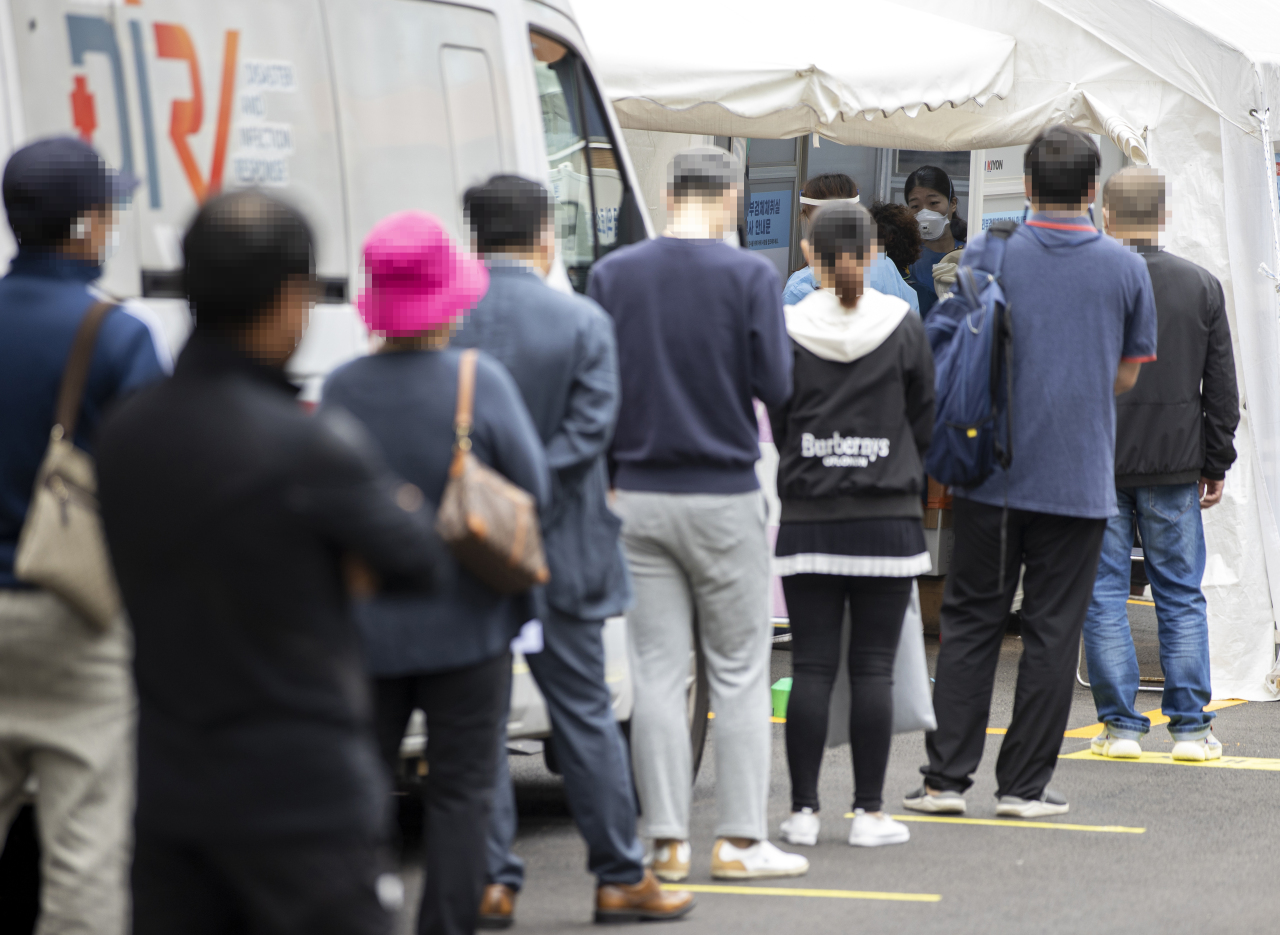South Korea reported double-digit gains in COVID-19 cases for the fourth consecutive day Sunday, though health authorities remain on alert over a potential rebound in infections after the Chuseok fall harvest holiday.
On Sunday, the last day of the extended Chuseok holiday, Korea added 64 new coronavirus cases, including 47 locally transmitted cases, according to the Korea Disease Control and Prevention Agency.
T
he country’s new daily COVID-19 case count had been under 100 for the previous three days -- 75 new cases on Saturday, 63 on Friday and 77 on Thursday -- after hitting 113 on Wednesday. This, however, could be due to fewer coronavirus tests being carried out over the holiday, officials said.
Prime Minister Chung Sye-kyun expressed his gratitude to the people for having complied with the government’s virus control guidance over the holiday but warned that a silent spread of the virus could result in a spike in the number of cases after the holiday.
“We are not yet at the stage where we can let our guard down,” he said Sunday at a meeting on the country’s COVID-19 response, citing the virus’s 14-day incubation period.
The extended holiday, which ran from Wednesday to Sunday, was seen as a critical point in the country’s fall virus fight, as human movement and gatherings could heighten the risk of the community spread of COVID-19.
Among those who traveled to their hometowns during the holiday, two people had already tested positive for the virus, the KCDA said at a briefing Saturday.
The country also has a three-day break this coming weekend, with Hangeul Day falling Friday.
The government designated the period from Sept. 28 to Oct. 11 as a special quarantine period. During the period, Level 2 social distancing rules are in place across the nation, with gatherings of more than 50 people indoors or 100 people outdoors prohibited and sporting events being held without spectators. In the Seoul metropolitan area, 11 types of high-risk businesses including karaoke rooms and nightclubs are banned from operating.
Health and Welfare Minister Park Neung-hoo said Sunday at a briefing that the government will decide within this week whether to lower or maintain the current level of social distancing after closely watching the situation.
There are serious concerns about the possibility that the virus may be spreading silently, with sources of infection unknown for 18.4 percent of new cases for the past two weeks, and with sporadic clusters of infections being uncovered mostly in the Seoul metropolitan area, home to nearly half of the country’s population.
New clusters emerged at a high school in Seoul, where seven people tested positive for the coronavirus, and at a nursing home in Bucheon, Gyeonggi Province, where a total of 11 people had the virus.
Of Sunday’s locally transmitted cases, the vast majority were in Greater Seoul -- 16 in Seoul, five in neighboring Incheon and 14 in Gyeonggi Province, which surrounds the capital. Outside the Seoul area, five cases were reported in Busan, three in North Gyeongsang Province, two in Daejeon, and one each in Ulsan and North Chungcheong Province.
Of Sunday’s 17 imported cases, eight were identified while the individuals were under mandatory self-quarantine in Korea, with the other nine detected during the quarantine screening process at the border. Thirteen cases came from elsewhere in Asia, three from Europe and one from the United States. Eleven of the imported cases involved foreign nationals.
The number of COVID-19 patients in serious or critical condition was 105 as of Sunday, with 86.7 percent of them in their 60s or older.
One more person died from the virus, bringing the death toll to 421. The overall fatality rate stands at 1.75 percent.
So far, of the 24,091 people confirmed to have contracted the new coronavirus here, 21,845 have been released from quarantine upon making full recoveries, up 58 from a day earlier. Some 1,825 people are receiving medical treatment under quarantine.
The country carried out 6,486 tests in the past day, with over 2.34 million tests conducted since Jan. 3. Some 22,116 people were awaiting results as of Sunday.
By Ock Hyun-ju (
laeticia.ock@heraldcorp.com)








![[Today’s K-pop] Blackpink’s Jennie, Lisa invited to Coachella as solo acts](http://res.heraldm.com/phpwas/restmb_idxmake.php?idx=644&simg=/content/image/2024/11/21/20241121050099_0.jpg)